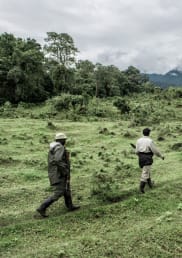Central Asia: A strategic framework for peacebuilding
The report provides an in-depth analysis of conflict potential in Central Asia, from which it derives a peacebuilding strategy.
Despite widely expressed fears, and with the important exception of the war in Tajikistan in the 1990s, until recently Central Asia had remained relatively peaceful since gaining independence in 1991. However, issues that could lead to conflict have not disappeared and new challenges have emerged that are rooted in the way the Central Asian states and the region have developed politically since independence.
The upheavals of 2005 in Kyrgyzstan and Uzbekistan demonstrated that the apparent stability was deceptive. Further, the region’s geographic location indicates that its security prospects must be viewed in a wider regional context that includes Afghanistan as well as its two great neighbours Russia and China. The next few years will be crucial for how Central Asia develops.
The headline conclusion is that the central issue with potential for violent conflict in Central Asia is the relationship between the citizens and the state. This conclusion indicates the need for a new peacebuilding strategy with specific targeted activities.






